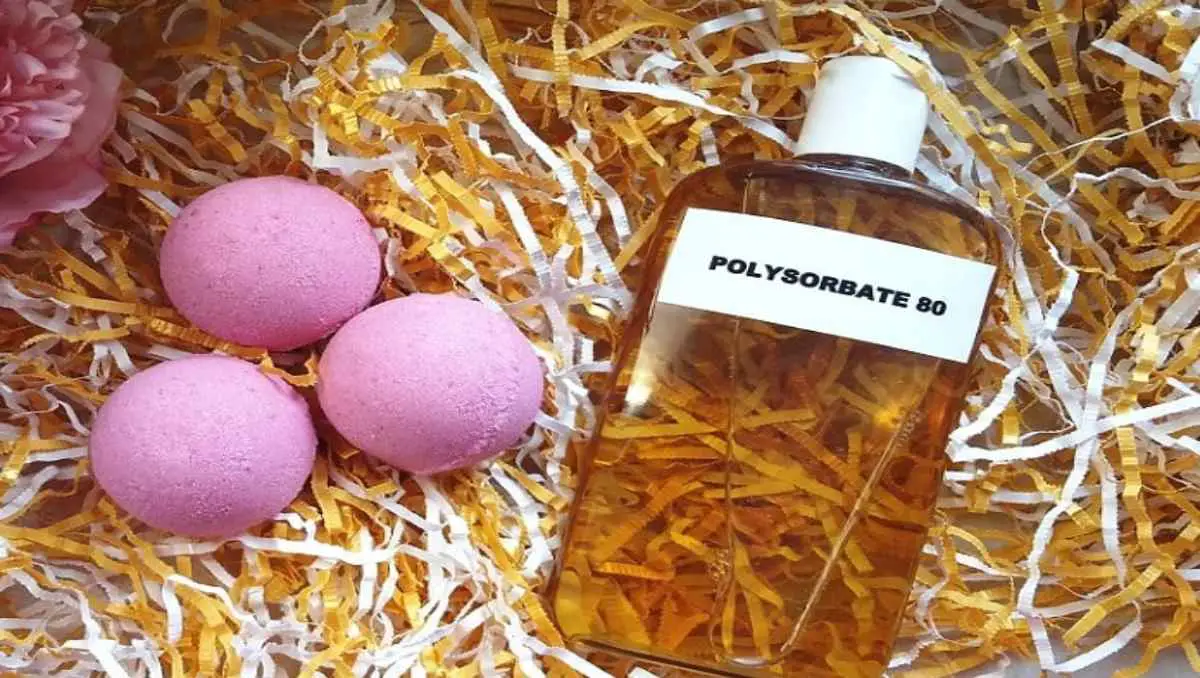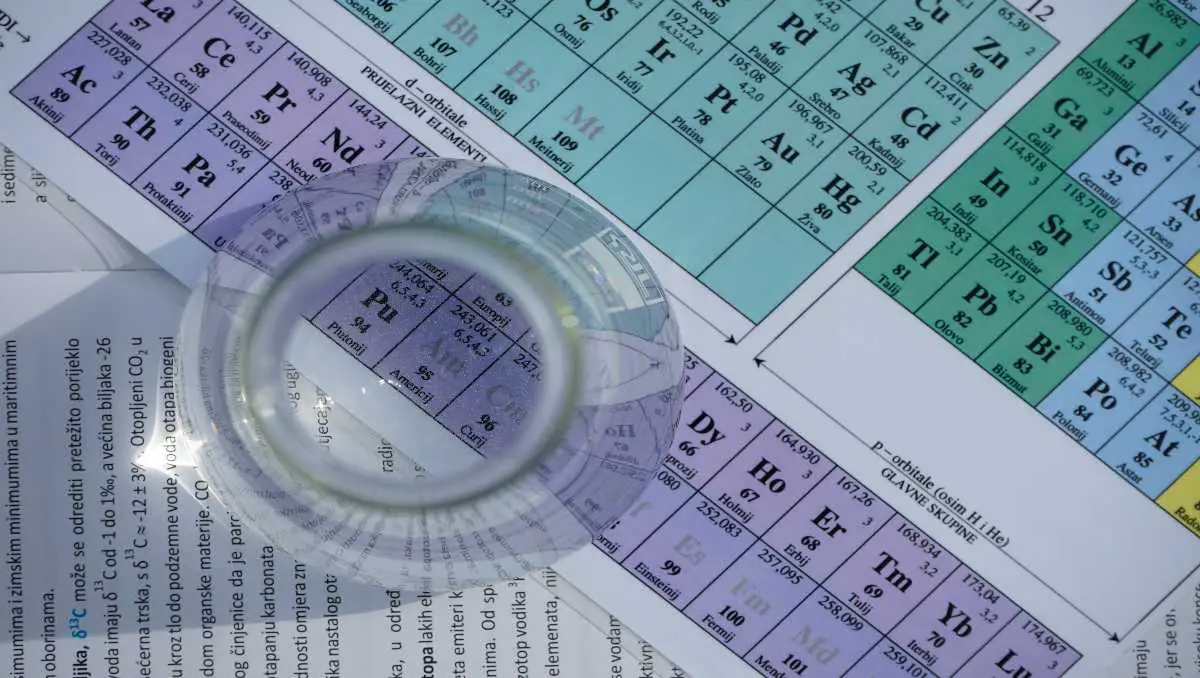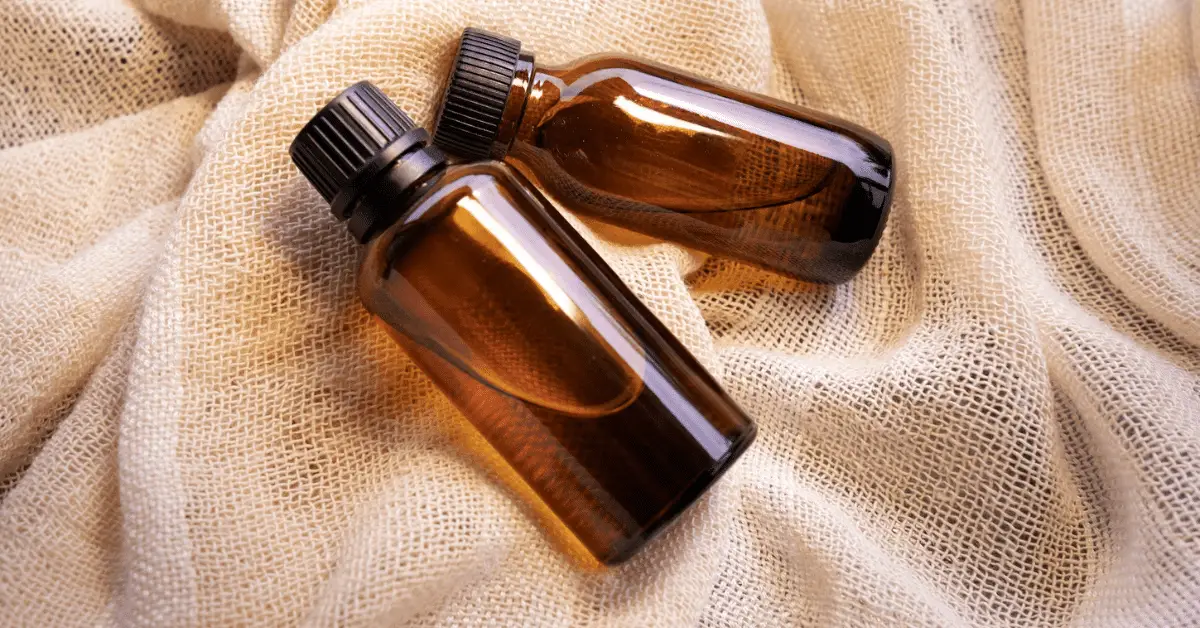Are you torn between glycerin and polysorbate? These two substances may seem similar, but they have distinct properties that make them suitable for different applications. The choice between glycerin and polysorbate ultimately depends on your specific needs. Are you looking to hydrate your skin or stabilize a formulation?
Glycerin and polysorbate serve different purposes in various industries. Glycerin, a natural humectant, is primarily used for its moisturizing properties in skincare and pharmaceuticals. Polysorbate is an emulsifier and surfactant commonly found in food and cosmetics.
In this article, we will delve into the characteristics of glycerin and polysorbate to help you choose the one that best suits your requirements.
What is Glycerin?
Glycerin, or glycerol, is a compound derived from various sources such as animal fats or vegetable oils. It is typically produced through hydrolysis, where the fats or oils are treated with alkali.
Glycerin has a syrupy consistency and is odorless and colorless in its pure form. It finds wide applications in pharmaceuticals, cosmetics, and food due to its hygroscopic properties and ability to act as a solvent and humectant.

Sources and Production
Glycerin can be derived from multiple sources, offering a range of sustainable options. It is most commonly produced through hydrolysis, where animal fats or vegetable oils are treated with alkali. This results in the separation of glycerin from the fatty acids in fats and oils.
Glycerin are also obtained as a byproduct of biodiesel production, providing an eco-friendly sourcing avenue.
Regardless of the source, whether animal fats, vegetable oils, or biodiesel production waste, glycerin plays a pivotal role in various industries, and its accessibility ensures its wide application. Due to its moisturizing properties, this versatile compound has various uses in food, pharmaceuticals, cosmetics, and personal care products.
Properties and Characteristics
Glycerin’s appeal lies in its distinctive properties, which make it an indispensable ingredient in countless formulations.
Notably, glycerin is highly hygroscopic, meaning it possesses the remarkable ability to attract and retain moisture. This makes it a highly sought-after compound in skincare products and cosmetics, where it helps keep skin hydrated and supple.
In addition to its moisturizing prowess, glycerin is esteemed for its exceptional stability and extended shelf life, which ensures the longevity of the products it enhances. It is also renowned for its safety, low toxicity levels, and strict adherence to safety regulations.
Common Applications
The versatility of glycerin is most evident in its extensive range of applications spanning diverse industries.
In skincare products, glycerin acts as a humectant, drawing and retaining moisture to keep the skin hydrated and radiant.
In the pharmaceutical sector, glycerin is a crucial ingredient in medications and syrups thanks to its gentle and safe properties.
In the food industry, it serves as a valuable sweetener and preservative, finding use in confectionery and bakery products. Additionally, glycerin is pivotal in producing cosmetics and personal care items, ensuring they retain moisture and deliver exceptional results.
What is Polysorbate?
Polysorbate, or Tween, is a group of nonionic surfactants derived from sorbitol and oleic acid. It is commonly produced through ethoxylation, where oleic acid reacts with ethylene oxide.
Polysorbate has excellent solubility in water and can form stable emulsions with oils, making it a versatile ingredient in various industries such as food, cosmetics, and pharmaceuticals.
Its typical applications include acting as an emulsifier in ice cream production, stabilizing oil-in-water formulations in skincare products, and enhancing the solubility of drugs in pharmaceutical formulations.

Sources and Production
Polysorbate is typically derived from plant oils or chemically synthesized. Its production involves the esterification of sorbitol with oleic acid, which yields different variations of polysorbate with distinct properties.
The synthesis of polysorbate ensures that it is free from impurities and allergens, making it a safe and reliable choice for various applications. Its synthetic production also allows for customization, tailoring polysorbate to meet specific formulation requirements, further enhancing its versatility.
Properties and Characteristics
Polysorbate boasts unique properties that make it indispensable in pharmaceuticals, cosmetics, and food industries.
One of its most notable characteristics is its emulsifying ability, allowing it to uniformly disperse oil and water-based ingredients. Polysorbate exhibits excellent solubilizing properties, making it effective in solubilizing hydrophobic substances.
It also contributes to the stability and consistency of products, ensuring that formulations remain well-mixed and free from separation. Furthermore, Polysorbate is known for its mild and non-irritating nature, making it suitable for use in formulations designed for sensitive skin or ingestion.
Common Applications
The versatility of Polysorbate is reflected in its widespread applications across numerous industries.
In the pharmaceutical sector, it is often used as an emulsifier in medications, ensuring that the active ingredients are evenly distributed.
In the cosmetics industry, polysorbate plays a crucial role in formulating creams, lotions, and serums, ensuring that oil and water-based ingredients are well-blended.
In the food industry, it is utilized as a food additive, facilitating the dispersion of flavorings and colorants in various products.
Key Differences Between Glycerin and Polysorbate
When comparing glycerin and polysorbate, it’s essential to consider their key differences in chemical structure, properties and characteristics, functions and uses, solubility and compatibility, and safety and regulations.
Chemical Structure

Glycerin possesses a relatively simple chemical structure with the formula C3H8O3. It is a trihydric alcohol characterized by three hydroxyl (OH) groups and a linear three-carbon backbone.
Glycerin’s chemical makeup gives it a syrupy consistency and excellent hydrophilic properties, allowing it to attract and retain moisture, making it a highly effective humectant and moisturizing agent.
On the other hand, Polysorbates, such as Polysorbate 80, have a more complex chemical structure. Polysorbates are esters formed by the reaction of sorbitol (a sugar alcohol) with oleic acid (a fatty acid). This complex structure, consisting of a sorbitol backbone esterified with oleic acid, imparts emulsifying and solubilizing properties to polysorbates.
These properties enable polysorbates to interact with oil and water-based substances, making them versatile in applications where the goal is to combine or stabilize oil and water phases in various formulations.
Distinctive Attributes and Qualities
Glycerin is prized for its exceptional moisturizing properties. It’s highly hygroscopic, readily attracting and retaining moisture, making it a sought-after component in skincare products and cosmetics.
Glycerin also boasts excellent stability and an extended shelf life. It is considered safe for use due to its low toxicity levels and compliance with stringent safety regulations, rendering it suitable for applications in pharmaceuticals and food production.
Polysorbate, in contrast, is recognized for its emulsifying and solubilizing properties. It’s proficient at dispersing and stabilizing oil- and water-based ingredients, making it a valuable emulsifier in various formulations.
This characteristic is beneficial in industries such as cosmetics and pharmaceuticals, where the even distribution of diverse components is essential.
Polysorbate is also known for its mild and non-irritating nature, making it suitable for sensitive skin products. However, it may have drawbacks, such as the potential for impurities if not properly purified during production, that’s why many are looking for polysorbate 80 alternatives nowadays.
Functions and Uses

Glycerin is primarily celebrated for its exceptional humectant properties. Its ability to keep the skin hydrated and supple is its hallmark feature, and it also finds applications in pharmaceuticals and the food industry, where it acts as a sweetener and preservative.
Polysorbate is valued for its emulsifying and solubilizing functions. Its capacity to disperse and stabilize oil and water-based substances makes it indispensable in formulating a wide array of products in the pharmaceutical industry.
Polysorbate also ensures even distribution of active ingredients. In cosmetics, it plays a pivotal role in formulating creams, lotions, and serums, facilitating the blending of oil and water-based components.
Additionally, polysorbate is used in the food industry as a food additive, aiding in the dispersion of flavorings and colorants in various products.
Solubility and Compatibility
Glycerin is highly soluble in water due to its hydrophilic nature. It readily interacts with water molecules, making it an excellent humectant and moisturizing agent. Glycerin’s compatibility with water-based substances is a key feature, enabling it to efficiently attract and retain moisture in various formulations.
Polysorbate exhibits excellent solubilizing properties, allowing it to solubilize hydrophobic or oil-based substances in water-based solutions. This makes it a valuable emulsifier, as it bridges the gap between oil and water, creating stable emulsions.
Polysorbate’s compatibility with both oil and water phases in formulations is pivotal in industries such as cosmetics, where it’s used to create consistent and well-blended products. Its ability to solubilize hydrophobic ingredients enhances the overall compatibility of various components in a formulation.
Safety and Regulations
Glycerin is widely recognized for its safety profile. It is considered safe in various industries, including pharmaceuticals, cosmetics, and food production.
Glycerin’s low toxicity levels and compliance with stringent safety regulations make it a trusted ingredient. Its long history of safe usage further underscores its reputation as a reliable and well-tolerated compound.
While generally safe, polysorbate may require more specific attention to purity during production to avoid potential impurities. When purified and used in accordance with industry standards, polysorbate is considered safe for use in medications, cosmetics, and food additives. However, its safety profile may depend on the specific grade and quality of polysorbate used in formulations.
In summary, glycerin and Polysorbate are generally considered safe for various applications when used per established regulations and quality standards.
Glycerin vs. Polysorbate – Applications in Food, Cosmetics, and Pharmaceuticals
Both glycerin and polysorbate are versatile substances that contribute to multiple sectors due to their various applications.
In Food and Beverage

Glycerin is widely used in food and beverage, primarily as a sweetener and preservative. Its ability to attract and retain moisture makes it valuable in enhancing various products’ texture and shelf life.
Glycerin is often found in confectionery, baked goods, and beverages, where it helps maintain freshness and prevents crystallization in certain confections.
On the other hand, polysorbate is used in the food and beverage industry for different purposes. It serves as a food additive, often as an emulsifier and solubilizer.
Polysorbate aids in dispersing and stabilizing oil-based flavorings and colorants in water-based products, enhancing the overall consistency of formulations. This makes it valuable in various food and beverage applications, such as salad dressings, ice cream, and certain beverages.
In Personal Care Products
Glycerin is extensively used in personal care items such as skincare products, shampoos, and dish soaps. Its primary role lies in its exceptional moisturizing properties, as it efficiently attracts and retains moisture, ensuring the skin remains hydrated and supple.
Glycerin is a favored ingredient in products that address dryness, making it a cornerstone in moisturizers and lotions. Its compatibility with the skin and its ability to enhance its moisture content is highly regarded.
Polysorbate serves a different purpose in personal care products. It is often employed as an emulsifier, helping combine and stabilize oil and water-based ingredients in formulations. This property is particularly valuable in the creation of cosmetic creams, lotions, and serums, where it ensures that different components blend seamlessly and maintain a consistent texture.
Polysorbate’s role is integral in achieving personal care products’ desired texture and feel, contributing to their overall quality.
In Pharmaceuticals

Glycerin is widely employed in pharmaceuticals for its safety, low toxicity, and ability to act as a solvent and humectant. It is a key ingredient in medications and syrups, where it helps maintain the stability and consistency of various formulations.
Glycerin’s gentle nature and long history of safe usage make it suitable for oral and topical pharmaceutical products, contributing to their efficacy and patient tolerance.
Polysorbate, in contrast, serves as an emulsifier in pharmaceuticals. It ensures that pharmaceutical formulations maintain their intended consistency and uniformity, especially in the case of medications that contain both hydrophobic and hydrophilic components.
This emulsifying role is significant in the pharmaceutical industry, enhancing the effectiveness of a wide range of medications.
Glycerin vs Polysorbate: Which One to Choose?
Let’s compare these two substances based on cost, effectiveness, environmental impact, potential side effects, and regulatory considerations.
Firstly, let’s consider the cost comparison. Glycerin is generally more affordable compared to polysorbate. This makes it a favorable option for industries looking to reduce process expenses.
In terms of effectiveness, both glycerin and polysorbate have their advantages. Glycerin is known for its moisturizing properties and is commonly used in skincare products. On the other hand, polysorbate acts as an emulsifier and stabilizer in various applications such as food processing and pharmaceuticals.

About the environmental impact – glycerin is derived from natural sources like vegetable oils or animal fats, making it biodegradable and environmentally friendly. Polysorbate, however, may have a higher potential for environmental accumulation due to its synthetic nature.
Potential side effects should also be considered when choosing between these substances. While glycerin and polysorbate are generally considered safe for use in regulated quantities, some individuals may experience allergic reactions or skin irritation.
Regulatory considerations play a crucial role in decision-making. Both glycerin and polysorbate are approved by regulatory bodies such as the FDA for specific applications. However, it’s essential to ensure compliance with local regulations before using either substance.
You might also be interested in learning about the safety of polysorbate 80 for pregnant women.
The Conclusive Verdict
Choosing between glycerin and polysorbate ultimately depends on your specific needs and requirements.
Glycerin is a versatile compound commonly used in skincare products for its moisturizing abilities, while polysorbate is often utilized as an emulsifier or stabilizer in various industries.
By carefully considering your product’s desired outcome and purpose, you can make an informed choice that will best suit your needs.







